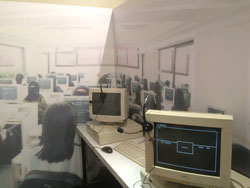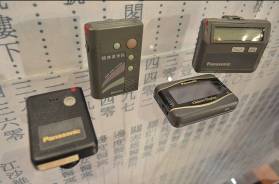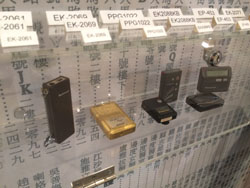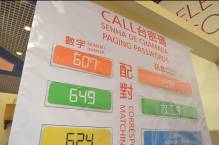"Telecommunication over Decades" Special Exhibition
Simulated Paging Station

Paging stations help people to send messages to the pager owner. Different types of pagers require different ways of sending messages. If you are interested to know more, you may read the information about paging service from the computer. You may also experience the work of being a paging operator. Simply input the messages according to the instruction. See if you have the potential of being a paging operator for the "Alphanumeric Pagers". In the "Numeric Pagers" era, paging operators had to convert the messages into the specific numeric codes first before sending them out to the pager owners. Then the pager owners had to decode the messages by themselves. If you also want to try, just make up your own paging passwords with reference to the information on the panel. See if other people can decode your messages correctly!
Paging Service
In 1977, several paging companies provided 24-hour paging service. This kind of service was not free of charge. In addition to buying the pager and paying for the service fee, the subscribers also had to pay the government for the license fee. Subscribers in the early days included policemen, journalists, agents, medical staff, and taxi drivers that did not have a fixed working location yet needed to keep contact with others all the time. Later on, owing to the convenience and lower cost, it became more popular and even students and housewives had pagers. However, compared to the 50,000 subscribers in 1994, there were only 865 subscribers at the end of 2014.
Simulated Paging Station
At the earliest stage, paging operators had to mark down the messages on the numbered "call sheet". Until the 90's, computer systems were used due to the huge increase in service demand. When someone called to find the pager owner, the operator would instantly input the caller's telephone number and message into the computer, and send a message to the pager asking the owner to return call to check the message. To deal with the increasing amount of workload, paging companies employed a lot of part-time operators. In the simulated paging station, you can play the role of an operator to page the subscriber, and recall the "collective memory" of many part-timers from the 80's to 90's!
Pager

Pager is a small telecommunications device that receives alert signals and/or short messages. Macao people use to call it "call machine". Tone-only, numeric and alphanumeric pagers were the most popular styles in Macao.

Tone-only Pagers
Macao people call pager as "beepers" because it can make the "beep" sound. This kind of pager that appeared in the 70's was very simple. When someone needed to find the pager owner, he had to call the paging station and leave his contact number and message. Then the operator would activate the "beep" function of the owner's pager. The owner had to call back the station to get the message. Then he would need to make another phone call to reply to the person who wanted to find him. In other words, the owner had to make at least two phone calls in the whole process. It was not very convenient for the users. At the later stage, pagers with "Four tones" appeared in the market. They could make four different kinds of sounds. The owner just had to pre-set the telephone numbers represented by the four sounds. Then he could save some trouble of returning so many phone calls every time.
Numeric Pagers
"Numeric pagers" with a display that could show Arabic numbers appeared in mid 80's. Since it was able to display the return call number, and a long set of numbers, the paging operators had designed a list of numeric codes to represent messages commonly used, for instance, surnames, "Please go home", "Please wait for a moment", "Happy Birthday!", etc. Hence the pager owners did not have to return call immediately every time. However, if the message was too long or complicated, the owner still had to call back and get the message. Since numeric pagers were so much more convenient, beepers quickly became obsolete.
Alphanumeric Pagers
In the late 80's, "English Text Pagers" appeared in the market. The messages could be directly displayed on the pager in English so that the owner could get the message directly without having to return call. However, since Chinese was the main medium of communication in Macao, it was difficult for English pagers to become popularized. Until the early 90's when "Chinese Text Pagers" were available, the problem was greatly solved. To promote Chinese pagers, the paging operators included different value-added services, such as financial news, traffic updates, weather report, zodiac and constellations, etc. Pagers then became a trendy device.
Pager Passwords

While "Numeric Pagers" were commonly used, the paging company would pre-set some numeric codes to represent the common surnames, nicknames, messages, etc. They also printed code cards for the subscribers. These codes were similar to passwords. Every paging company would design their own code cards according to their needs. Based on the following codes, you may try setting your own "pager password" and see if others can decode it.
About CMM
Contact US
Others
Other Websites
Number of Visitors:
Last Modified Date: 10/03/2025